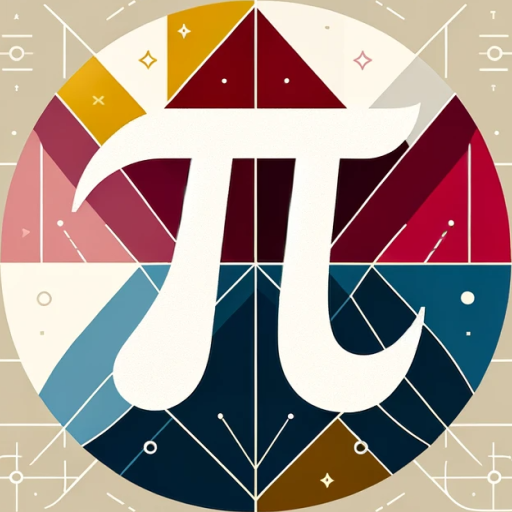Matrix Algebra-Matrix Algebra Tool
AI-powered Matrix Algebra Solutions
Can you explain eigenvalues?
What is the difference between vector space and subspace?
How do I calculate the determinant?
Can you help me understand linear transformations?
Related Tools
Load More
God of Linear Algebra
Comprehensive linear algebra mentor and guide with interactive features, including regular quizzes.

math
Solve Advance Math questions with Concepts & Steps using Image or Text. Previously Math Expert.

Linear Algebra
Most versatile solver for Linear Algebra problems. Easy to understand with step-by-step explanations. Powered by Solvely.

Advanced Math and Matrix Expert
Deep expertise in matrix diagonalization and applications.

Algebra
Most versatile solver for Algebra problems. Easy to understand with step-by-step explanations. Powered by Solvely.
matrix
Matrix problem solver providing solutions in math symbols
20.0 / 5 (200 votes)
Introduction to Matrix Algebra
Matrix algebra, also known as linear algebra, is a branch of mathematics that focuses on the study of matrices and their properties, operations, and applications. Matrices are rectangular arrays of numbers, symbols, or expressions arranged in rows and columns. The primary purpose of matrix algebra is to provide a framework for representing and solving linear equations, performing transformations in vector spaces, and working with higher-dimensional data structures. Matrix algebra is foundational in various fields, including computer science, physics, engineering, economics, and statistics. For instance, in computer graphics, matrices are used to perform transformations such as rotations, translations, and scaling of objects in a 3D space.

Main Functions of Matrix Algebra
Matrix Multiplication
Example
Multiplying two matrices to combine linear transformations.
Scenario
In computer graphics, matrix multiplication is used to combine multiple transformations. For example, a single matrix can represent a series of transformations such as rotation, scaling, and translation applied to a 3D model.
Determinant Calculation
Example
Computing the determinant of a matrix to understand its properties.
Scenario
In physics, the determinant of a matrix can be used to determine whether a system of linear equations has a unique solution. If the determinant is zero, the system does not have a unique solution.
Eigenvalues and Eigenvectors
Example
Finding the eigenvalues and eigenvectors of a matrix to analyze its characteristics.
Scenario
In machine learning, eigenvalues and eigenvectors are used in Principal Component Analysis (PCA) to reduce the dimensionality of data while preserving its variance. This helps in visualizing high-dimensional data and reducing computational complexity.
Ideal Users of Matrix Algebra
Students and Educators
Students and educators in fields such as mathematics, engineering, physics, and computer science benefit from understanding matrix algebra as it is essential for solving linear equations, performing data analysis, and understanding theoretical concepts in their studies.
Data Scientists and Analysts
Data scientists and analysts use matrix algebra for data manipulation, performing operations on large datasets, and implementing algorithms in machine learning and artificial intelligence. Matrix operations enable efficient computation and analysis of multidimensional data.

Guidelines for Using Matrix Algebra
Step 1
Visit aichatonline.org for a free trial without login, also no need for ChatGPT Plus.
Step 2
Ensure you have a basic understanding of linear algebra concepts, such as matrices, vectors, and operations like addition, multiplication, and inversion.
Step 3
Identify the specific matrix algebra problem you need to solve, whether it's solving systems of linear equations, performing transformations, or analyzing data.
Step 4
Use matrix algebra tools or software, such as MATLAB, NumPy in Python, or dedicated calculators, to input your matrices and perform the required operations.
Step 5
Interpret the results within the context of your problem. Verify your solutions by cross-referencing with theoretical knowledge or additional computational checks.
Try other advanced and practical GPTs
유튜브 대본 작성 전문가 (숏츠, 롱폼)
AI-Powered Scripts for Engaging Videos

German Tutor (Learn German)
AI-Powered German Learning for All Levels

German Teacher
AI-powered German learning assistant

PDF 요약 전문가
AI-powered PDF analysis and summary.

智在必得 - 中英文翻译官AI专家
AI-Powered English-Chinese Translator

Flutter开发
Empowering Flutter development with AI insights

PMI WBS Creator & Guide
AI-powered Work Breakdown Structure creation

Grammar Guru
AI-powered writing enhancement

Tender Writer Assistant
AI-Powered Excellence in Tender Writing

Revisão de texto - Gramática, ortografia e clareza
AI-powered text revision for perfect writing

Tradingview Pinescript 5 Coding Master
AI-powered coding help for Pine Script.

高情商聊天大师
AI-powered insights for genuine connections

- Data Analysis
- Engineering
- Econometrics
- Computer Graphics
- Systems Solving
Matrix Algebra Q&A
What are the common operations performed in matrix algebra?
Common operations include addition, subtraction, scalar multiplication, matrix multiplication, transposition, inversion, and finding determinants.
How is matrix algebra used in data analysis?
Matrix algebra is used in data analysis for tasks such as regression analysis, principal component analysis (PCA), and performing transformations on data sets.
Can matrix algebra help solve systems of linear equations?
Yes, matrix algebra is essential for solving systems of linear equations using methods like Gaussian elimination, LU decomposition, and matrix inversions.
What tools are recommended for performing matrix algebra computations?
Recommended tools include MATLAB, NumPy in Python, R, and specialized matrix calculators available online.
Why is matrix algebra important in computer graphics?
Matrix algebra is crucial in computer graphics for transforming shapes, performing rotations, scaling objects, and manipulating 3D models.